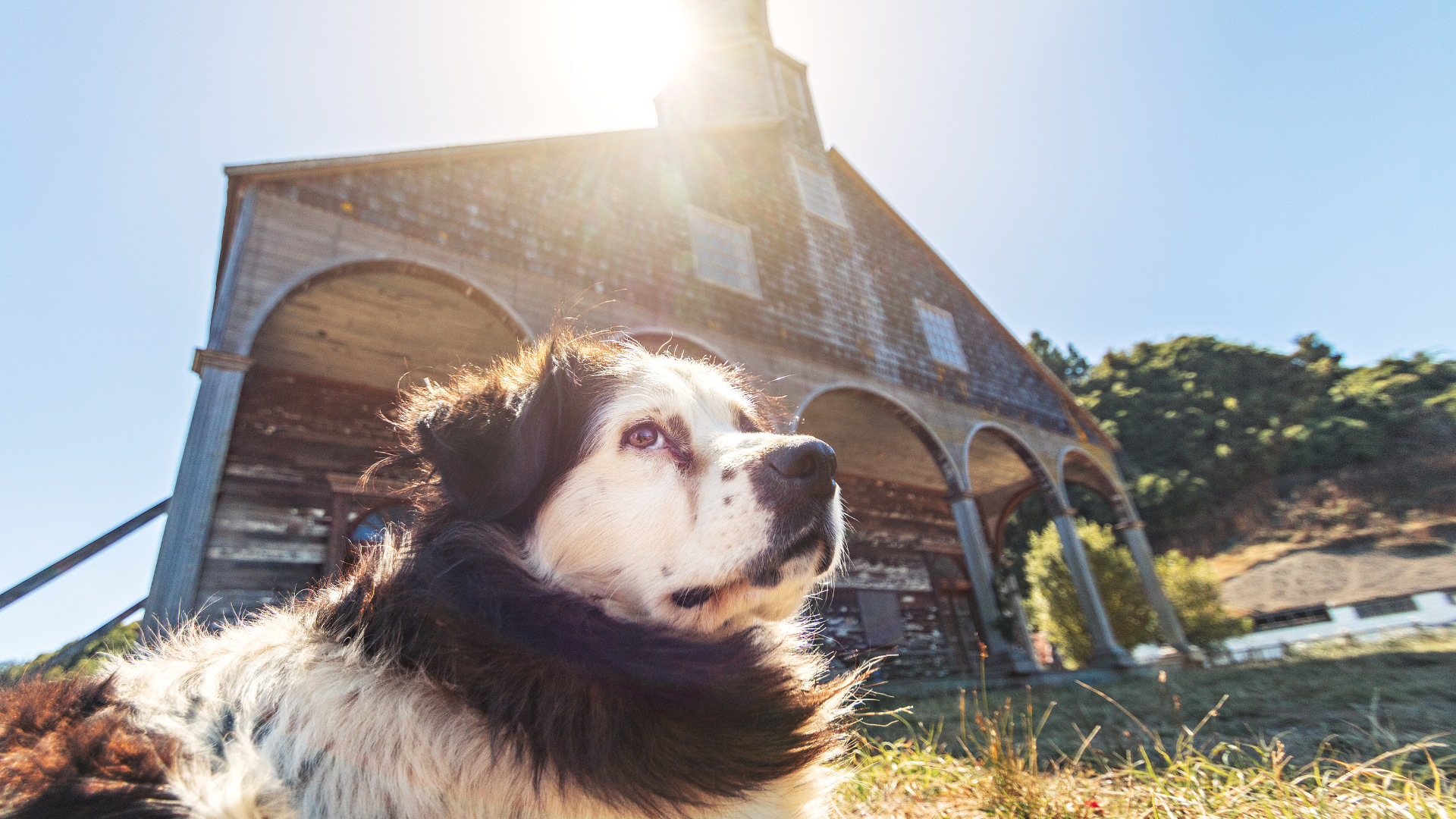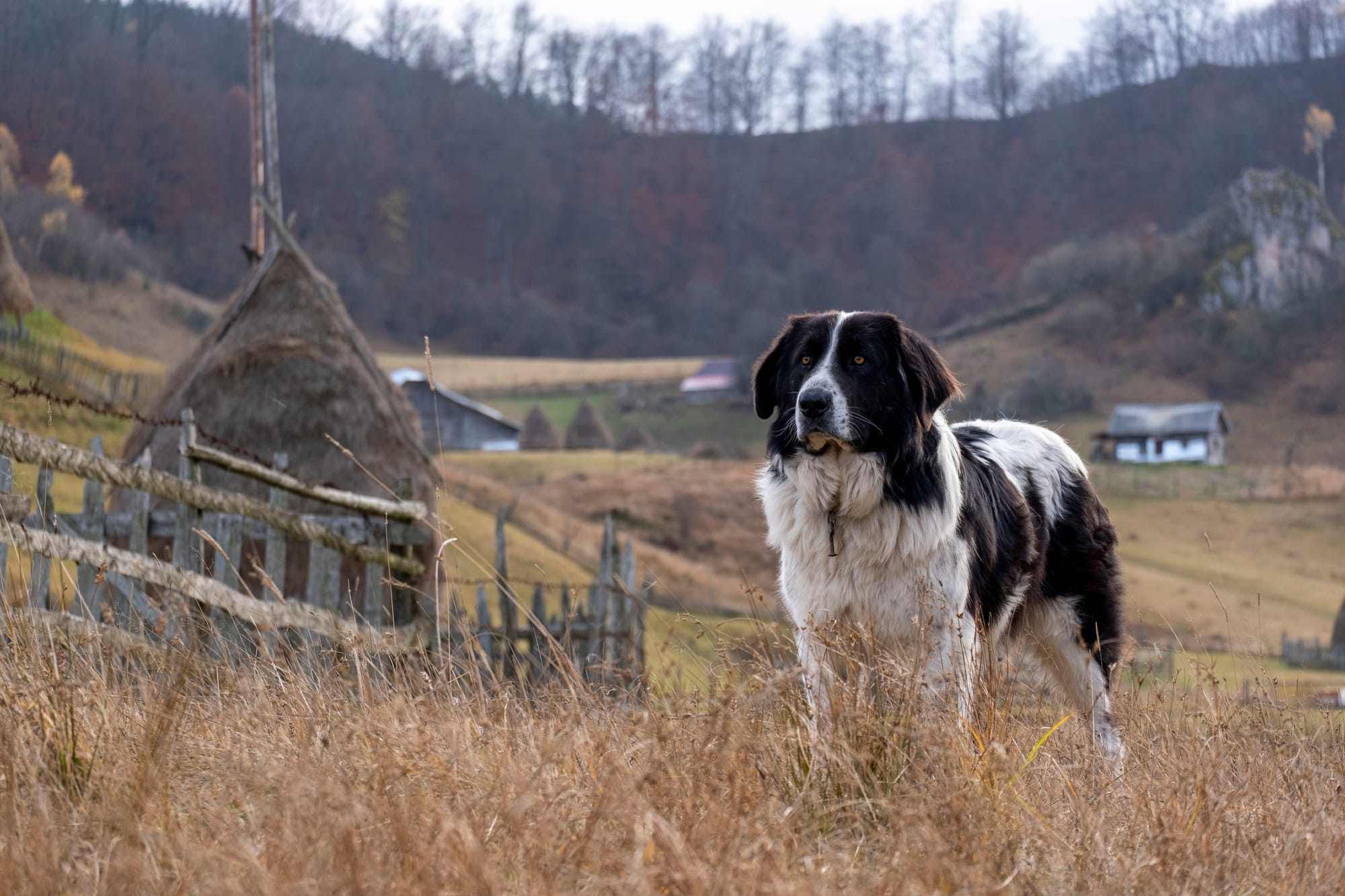Imagine standing beside a gentle giant, its presence both majestic and comforting, exuding an aura of strength and kindness. This is the essence of the St. Bernard, a breed renowned for its colossal size and benevolent nature. Often, the sheer scale of these dogs leads to a common query: Are St. Bernards part of the Mastiff family? This confusion is not unfounded, as both breeds share imposing statures and similar traits that blur the lines of distinction for many.

This article aims to shed light on this query, delving into the rich history and characteristics of the St. Bernard to clarify its classification. Additionally, we'll provide invaluable insights for first-time owners, guiding you through the nuances of bringing such a remarkable breed into your life. Whether you're captivated by their rescue legacy or their gentle demeanor, understanding the true nature of the St. Bernard is the first step in a rewarding journey with these extraordinary companions.
The St. Bernard Breed Explained
The St. Bernard's lineage traces back to the Swiss Alps, where they were originally bred by monks in the Great St. Bernard Hospice, a traveler's refuge, during the 17th century. These dogs were not only companions but also valiant rescuers, braving harsh conditions to find and save lost travelers. Their keen sense of direction and resistance to cold made them indispensable in snowy rescues, leading to countless tales of their heroism and the lives they've saved.
Physically, St. Bernards are among the largest dog breeds, with males standing up to 30 inches at the shoulder and weighing between 140 to 180 pounds, while females are slightly smaller. They possess a powerful build, with a massive head, muscular legs, and a deep chest.
Their coats come in two varieties: short-haired or smooth, and long-haired or rough. Both types feature a dense, water-resistant undercoat for insulation against cold climates. Their fur is primarily white with markings in red, brown, or brindle, and their expressive faces are adorned with a signature 'mask' that adds to their distinctive appearance.
Temperamentally, St. Bernards epitomize the phrase "gentle giants." Despite their imposing size, they are known for their calm, patient, and friendly nature. They are exceptionally good-natured with children, often displaying a protective yet gentle demeanor towards their younger family members. This breed's affable personality extends to other pets as well, making them excellent companions in multi-pet households.
However, due to their size and strength, early socialization and training are essential to ensure they grow into well-behaved adults. The St. Bernard's combination of benevolence, loyalty, and a keen sense of empathy towards humans cements their status as beloved family companions, far removed from their rescue origins in the snowy Alps.
Understanding Mastiffs
Mastiffs represent a group of large to giant dog breeds known for their impressive size, strength, and protective instincts. The term 'Mastiff' is often used to describe a number of breeds within this group, each with its own unique characteristics, yet sharing a common lineage that points back to ancient times. These dogs are characterized by their broad, powerful bodies, massive heads, and a generally calm and confident demeanor. Despite their formidable appearance, Mastiffs are known for their gentle and loyal nature, making them excellent family pets.
Historically, Mastiffs have served a variety of roles, from ancient war dogs to guardians of estates. Their lineage can be traced back to civilizations such as Babylon, where they were used in battle and for hunting large game. In medieval Europe, they were esteemed as guardians, protecting homes and livestock from predators and intruders. Over time, their roles have evolved, but their protective instincts remain, now serving more as gentle giants and loyal companions in modern households.
Within the Mastiff family, several breeds stand out, each with its distinct attributes:
- English Mastiff: Often simply referred to as the 'Mastiff', the English Mastiff is one of the largest dog breeds in terms of mass. They have a short coat, a dignified demeanor, and are known for their immense loyalty and affection towards their families.
- Neapolitan Mastiff: Originating from Italy, the Neapolitan Mastiff is recognized for its loose, wrinkled skin, especially around the face and neck, giving it a distinctive appearance. They are vigilant and devoted protectors of their home.
- Tibetan Mastiff: This breed is known for its thick, fluffy coat, which was an adaptation to the cold Himalayan climate. Tibetan Mastiffs are independent and strong-willed, with a history of guarding monasteries and nomadic herds.
- French Mastiff (Dogue de Bordeaux): Known for their massive heads and muscular build, French Mastiffs exhibit a deep loyalty to their families, combined with a calm and balanced temperament.
Each Mastiff breed brings its unique set of traits, but all share the common qualities of strength, loyalty, and a protective nature, which have made them cherished companions through the ages.
St. Bernards vs. Mastiffs – A Detailed Comparison
When comparing St. Bernards to Mastiffs, both breeds are renowned for their impressive size and gentle demeanor, yet they exhibit distinct differences that set them apart.
Physical Comparisons:
St. Bernards and Mastiffs are both among the largest dog breeds, but their physical attributes differ in several ways. St. Bernards typically weigh between 140 to 180 pounds, with a height ranging from 26 to 30 inches at the shoulder. They possess a muscular build with a balanced body, a massive head, and a kind, expressive face. Their coats can be either short or long, with distinctive markings primarily in shades of red, brown, and white.
Mastiffs, particularly the English Mastiff, can be even more massive, with some individuals weighing over 200 pounds, making them one of the heaviest dog breeds. They have a broad, powerful build with a significant head and a short coat that comes in fawn, apricot, or brindle. The Neapolitan Mastiff, another member of the Mastiff family, is notable for its loose, wrinkled skin and a more massive bone structure.
Temperamental Differences:
Both St. Bernards and Mastiffs are known for their gentle, affectionate nature, making them excellent family pets. St. Bernards, bred for rescue missions, are incredibly patient and nurturing, especially with children. Their friendly demeanor extends to other animals, making them suitable for multi-pet households. Early socialization is crucial to ensure they become well-adjusted adults, given their large size.
Mastiffs, on the other hand, are calm and dignified, often forming a strong bond with their family. Their protective instinct is more pronounced, making them excellent guardians of their home. Despite their imposing appearance, Mastiffs are typically good-natured with family members but may be reserved with strangers, underscoring the importance of socialization from a young age.
Role and Utility in History:
St. Bernards have a heroic legacy as rescue dogs in the Swiss Alps, saving countless lives with their remarkable sense of direction and resilience in snowy conditions. This background has imbued the breed with a strong sense of loyalty and a desire to help, traits that persist even in a domestic setting.
Mastiffs have a diverse history, having been used as war dogs, guardians, and hunters. Their formidable size and strength made them invaluable in battle and as protectors of estates and livestock. This historical role as guardians has contributed to their vigilant nature, making them less inclined to roam and more focused on protecting their immediate family and territory.

In summary, while St. Bernards and Mastiffs share similarities in size and disposition, their physical characteristics, temperamental traits, and historical roles reflect their distinct breed-specific qualities, shaping their suitability for different household environments and roles within the family.
Addressing the Question – Is a St. Bernard a Mastiff?
The question of whether a St. Bernard falls within the Mastiff category is one that intertwines genetic lineage, breed characteristics, and historical context. Delving into the genetic makeup and breeding practices of these dogs offers insight into their classification.
Historically, the St. Bernard shares a lineage that can be traced back to the ancient Molossus, a type of large, powerful dog from which many Mastiff-type breeds are believed to have descended. This common ancestry suggests a genetic link between St. Bernards and various Mastiff breeds. However, the development and refinement of the St. Bernard breed, particularly its role as an Alpine rescue dog, led to selective breeding practices that emphasized traits like cold resistance, navigational abilities, and a gentle temperament, diverging from the typical Mastiff characteristics centered around guarding and protection.
Expert viewpoints from kennel clubs and breed organizations provide further clarity. The American Kennel Club (AKC) and the United Kennel Club (UKC), among others, classify the St. Bernard as a working breed, distinct from the Mastiff group. This classification is based on the breed's historical role, physical characteristics, and temperament, which align more closely with working breeds' attributes than those of the Mastiff group.
While St. Bernards and Mastiffs share a common ancestor, their paths diverged significantly through centuries of selective breeding, tailored to the specific needs and environments they were bred for. This has resulted in two distinct breeds with unique characteristics and roles. Thus, while acknowledging their shared heritage, it is accurate to consider the St. Bernard as separate from the Mastiff group, both in terms of genetic lineage and breed classification.
In summary, although St. Bernards share some historical and genetic connections with Mastiffs, their development into a breed with a distinct role and set of characteristics justifies their classification outside the Mastiff group. This clarification helps dispel misconceptions and provides a definitive answer to the breed classification question, ensuring prospective owners and breed enthusiasts understand the unique heritage and identity of the St. Bernard.

Choosing Your Companion – St. Bernard or Mastiff?
Deciding between a St. Bernard and a Mastiff as a companion involves careful consideration of your lifestyle, family dynamics, and readiness for long-term commitments. Both breeds require ample space due to their large size, meaning a small apartment might not be the best environment. A house with a spacious yard would be ideal, providing them room to move and play.
When it comes to exercise, both St. Bernards and Mastiffs need regular, moderate activity to maintain their health. However, St. Bernards might have slightly higher energy levels and enjoy more playful activities, while Mastiffs often prefer shorter, less intense exercise sessions. Consistent, gentle exercise is key to preventing joint issues, especially given their large frames.
Family dynamics play a crucial role in choosing your pet. Both breeds are known for their gentle nature with children, often showing patience and protectiveness. However, their large size requires supervision around very young children to prevent accidental bumps or falls. When it comes to other pets, socialization from a young age can help ensure harmonious relationships, though individual temperaments vary.
Long-term commitments to either breed involve addressing potential health issues. Both are prone to conditions like hip dysplasia and can have relatively short lifespans, with St. Bernards living around 8-10 years and Mastiffs around 6-12 years. Veterinary care for such large breeds can be costly, including regular check-ups, potential treatments for breed-specific conditions, and considerations for dietary needs to maintain a healthy weight.
Ultimately, choosing between a St. Bernard and a Mastiff depends on aligning their needs with your ability to provide a loving, supportive, and suitable environment. Reflecting on these considerations will guide you in making a responsible and fulfilling decision for both you and your future companion.
First-Time Owner's Guide to St. Bernard
Welcoming a St. Bernard into your home as a first-time owner is an exciting journey that requires thoughtful preparation and understanding of their specific needs. Given their colossal size, your living space must accommodate their comfort and safety. Ensure your home is spacious enough for them to move around without risk of injury or damage. Remove any items that could be hazardous to a large, curious dog, such as small objects they might swallow or fragile items easily knocked over.
Training is paramount from an early age to ensure your St. Bernard grows into a well-mannered adult. Start with basic obedience training, focusing on commands like "sit," "stay," "come," and "down." Consistency and positive reinforcement are key. Socialization is equally important; expose your St. Bernard to various people, animals, and environments to foster a confident, well-adjusted temperament. Leash training is essential to manage their strength and size, particularly when they're fully grown.
Regarding health and maintenance, regular grooming is necessary to manage their thick coats, especially for the long-haired variety. Brushing several times a week helps reduce shedding and prevents matting. Pay attention to their diet to maintain a healthy weight, as obesity can exacerbate potential joint issues. Moderate daily exercise is recommended to keep them fit and prevent boredom, which can lead to destructive behavior. Routine veterinary check-ups will help catch any health issues early, ensuring your gentle giant remains a happy and healthy member of your family.
Conclusion
St. Bernards and Mastiffs, both majestic giants in the canine world, share traits like their imposing size and gentle nature. However, their origins, historical roles, and physical characteristics set them apart. St. Bernards, famed for Alpine rescues, and Mastiffs, with their guardian lineage, each bring unique qualities to a household.
For prospective owners, recognizing these differences is key to providing the right environment. Whether you're drawn to the St. Bernard's compassionate spirit or the Mastiff's stoic loyalty, understanding your chosen breed's specific needs ensures a fulfilling and loving companionship for years to come.
FAQs
- What is the main difference between a St. Bernard and a Mastiff?
- The main differences lie in their origins, historical roles, and physical characteristics. St. Bernards are known for their rescue work in the Swiss Alps, while Mastiffs have been used historically as guardians and protectors.
- Can St. Bernards be considered part of the Mastiff family?
- While St. Bernards share some similarities with Mastiffs, such as size and a gentle demeanor, they are classified as a separate breed with distinct lineage and characteristics.
- Are St. Bernards good with children and other pets?
- Yes, St. Bernards are known for their gentle and patient nature, making them excellent companions for families with children and other pets.
- What are the exercise needs of a St. Bernard compared to a Mastiff?
- Both breeds require moderate exercise, but St. Bernards may have slightly higher energy levels and benefit from more playful activities, while Mastiffs prefer shorter, less intense exercise sessions.
- What are some common health issues for St. Bernards and Mastiffs?
- Both breeds can be prone to hip dysplasia and other joint issues due to their large size. It's important for owners to monitor their health and maintain a healthy weight to prevent complications.
- How much space do I need to have a St. Bernard or Mastiff?
- Given their large size, both breeds thrive in environments where they have ample space to move around, such as a home with a spacious yard.
- What is the lifespan of a St. Bernard and a Mastiff?
- St. Bernards typically live for 8-10 years, while Mastiffs have a lifespan of around 6-12 years, depending on the specific breed within the Mastiff family.
- How should I prepare my home for a St. Bernard?
- Ensure your home is spacious enough to accommodate their size, remove hazardous items, and consider safety adjustments to prevent injuries or accidents.
- What kind of training is essential for St. Bernards?
- Early obedience training, socialization, and leash training are crucial to manage their size and strength as they grow.
- Are St. Bernards or Mastiffs more suitable for first-time dog owners?
- Both breeds can be suitable for first-time owners who are prepared for the responsibilities of caring for a large breed, including space, exercise, health maintenance, and training needs.